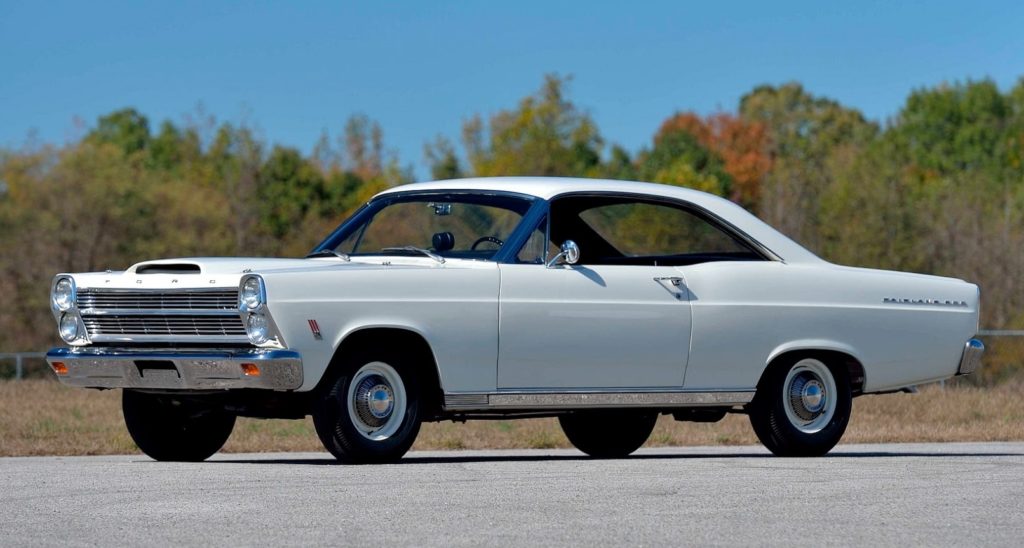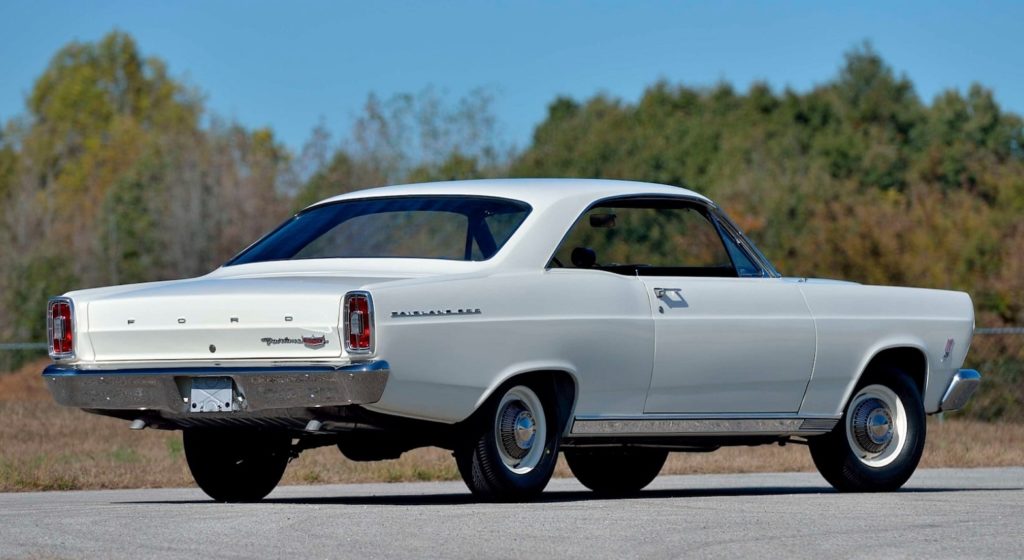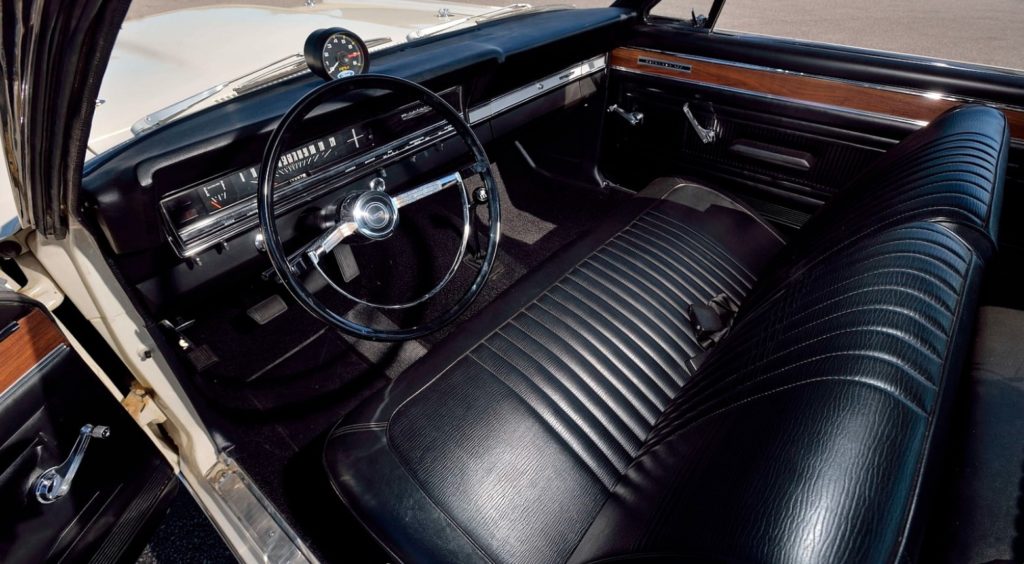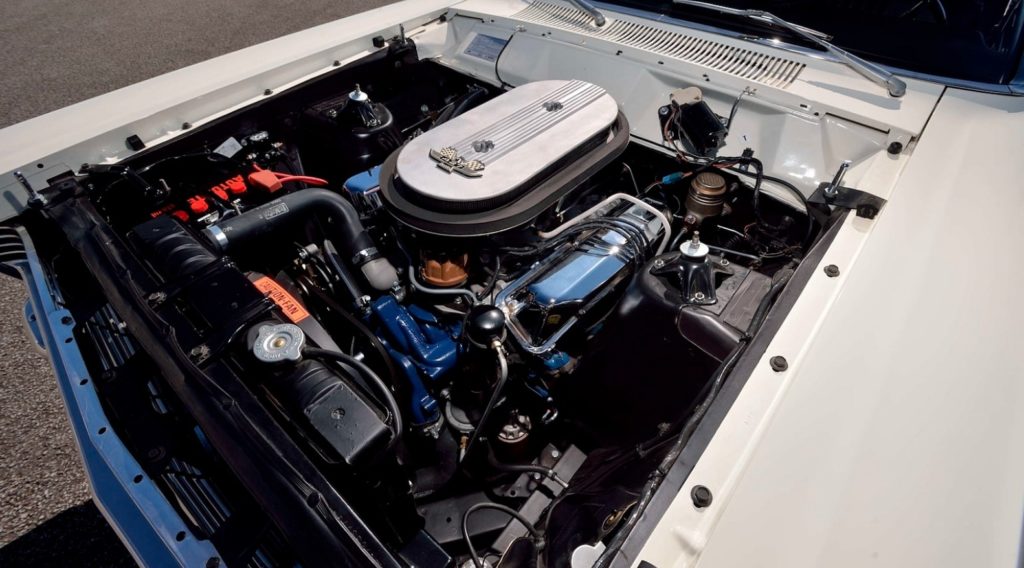Ford was racing the full-size Galaxie at the time but soon turned its attention to the Fairlane, which had been downsized to an intermediate in 1962. The midsize eventually spawned the Thunderbolt, a lightweight racer for the Super Stock class.
Fitted with the NASCAR-spec, 427-cubic-inch (7.0-liter) V8, the Thunderbolt debuted with a win at the Winternationals and then took home both the NHRA Top Stock crown and the NHRA Manufacturers’ Cup.

The Thunderbolt was short-lived, with only 100 units built in 1964. All were completed by the Dearborn Steel Tubing company since the 427 V8 didn’t fit under the Fairlane’s hood without major modifications.
The R-Code arrived two years later, just as Ford redesigned the Fairlane for the fifth generation. Although it wasn’t bigger than its predecessor, the Fairlane now had a bit more room under the hood, enough to fit the 390-cubic-inch (6.4-liter) Thunderbird V8 for standard production.
Unlike the Thunderbolt, which showcased a unique exterior, the R-Code looked like a run-of-the-mill Fairlane. Sure, the hood scoop was a hint that the V8 between the front wheels was far from regular, but everything else looked stock.

But this Fairlane wasn’t your grandpa’s daily driver in terms of output. Fitted with the same FE-series 427 V8 engine as the Thunderbolt, the R-Code had a long list of race-spec upgrades under the hood.
Highlights included an aluminum mid-rise intake, dual Holley 570 CFM four-barrel carburetors, and cast exhaust manifolds. Everything else was either forged steel or forged aluminum.

And just like the Thunderbolt, the R-Code was officially rated at 425 horsepower and 480 pound-feet (651 Nm) of torque, which was only 10 pound-feet (14 Nm) short of the mighty 426-cubic-inch (7.0-liter) Hemi V8 that Dodge and Plymouth offered at the time.
And like its rival offering, the 427 was underrated, with actual output coming in at around 500 horsepower.
